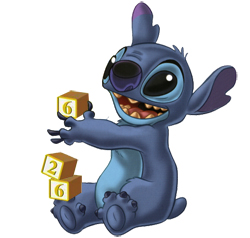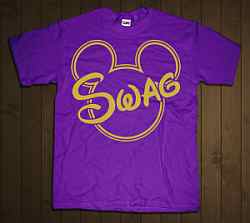FROM: The 626 Published Fridays
Discovery Island
The island in Disney World's Bay Lake was not always deserted. Jeff traces its history from its beginnings as the home for farmers and radio pesonalities to its acquisition by Disney, when it became first a pirate playground and then a wildlife attraction.
Disney's Animal Kingdom, though still relatively new, is one of the most popular Walt Disney theme parks in the world today. The exciting prospect of being able to get up close and personal with some of the world's most exotic animals is a fantastic opportunity that guests do not want to miss.
But Animal Kingdom is not the first time the Walt Disney Company allowed guests to see wild animals in a realistic recreation of their natural habitat. In fact, years before Animal Kingdom even existed, there was another park that afforded guests a similar experience.
When Walt was first seeking out the perfect place for Walt Disney World, he flew over some parcels of land to get a feel for the area from above. Rumor has it that on one of these many "fly bys", Walt fell in love with a tranquil, 11 acre island located in the middle of Bay Lake; so much so that Walt decided that this was the perfect area to build his new kingdom on the East Coast.
click an image to expand:

Front of the brochure for Treasure Island

Interior of the brochure for Treasure Island

Map of Treasure Island

Photo of Treasure Island

Logo for Discovery Island

Discovery Island pin

Map of Discovery Island

Another map of Discovery Island
Treasure Island
The island has a colorful history. From around 1900 to 1937, it was known as Raz Island, named after the family that lived and farmed on it. Not long after, Delmar Nicholson purchased the island for the paltry sum of $800 as a home for his family.
Delmar, also known as "Radio Nick", was Florida's first radio DJ, as well as a botanist and avid outdoorsman. Delmar renamed the island Idle Bay Isle, and lived there with his wife and their pet sand hill crane. The Nicholson family grew a wide variety of fruit and plant life, which they sold to local markets. After living there for almost 20 years, Delmar's declining health forced him to sell the island to a group of local businessmen as a hunting retreat. The property was again renamed, this time to Riles Island. It wasn't until 1965 that Disney bought the island.
Walt had big plans for this little getaway, and renamed it Blackbeard's Island. However, when Walt Disney World was opened in 1971, the island still sat unused. It wasn't until 1974 that construction began to turn the island into a new attraction.
When the island opened in April 1974, it was given the new name of Treasure Island. In the spirit of the original name that Walt had given it, the island had the fictitious distinction of being a pirate's hideaway, complete with shipwrecks and buried treasure hidden throughout. It also borrowed some elements from the live action Disney film of the same name.
Treasure Island remained this way for quite some time, until a major renovation closed it in early 1976. This transformation of the island caused it to lose much of its pirate theming. Close to 50,000 cubic yards of soil were brought to help expand its size. Flowers, trees, and plants from all over the world were added to change the island into a tropical paradise. When it was reopened in April 1976, it had a new name: Discovery Island.
Discovery Island
The island was now home to Avian Way, a walk-through attraction that featured exotic birds from all over the world. It even had its own snack bar, The Thirsty Perch. To visit Discovery Island, you had to take a boat from either the Contemporary or Polynesian Resorts, and it required a "Special Adventure" ticket to gain entry. Extremely educational in nature, it wasn't a big hit with the crowds. In an effort to draw more attendance to the island, Disney added other forms of wildlife to its makeshift habitat. In June 1978, new exhibits based on American alligators and Galapagos tortoises were introduced.
Despite being an overlooked attraction, Discovery Island was also an important exercise in wildlife conservation. Disney was awarded several special honors for their work in preservation and breeding of many exotic animals on Discovery Island. In fact, they were the first in the world to breed a Toco toucan, an extremely rare form of toucan, in captivity. At one point, more than 140 difference species of animals (ranging from beautiful butterflies to the fierce bald eagle and even a few primates!) and over 250 species of plants inhabited the island, many of which were on the verge of extinction.
For example, it was the home of the last remaining Dusky Seaside Sparrow before it died in 1987. Because of their work in educating the public, and their success in conservation, Disney was granted accreditation by the American Zoo and Aquarium Association in 1979.
Aside from its educational purposes, Discovery Island also had its share of Disney magic. The most notable was a 1977 promotion for the animated film The Rescuers. Ten families had a chance to win a Walt Disney World vacation and the opportunity to find a diamond worth $25,000 hidden on the island. Disney also installed a scavenger hunt on the island to make learning about its tropical inhabitants more fun for its smaller guests. Completed answer sheets for the hunt could be traded in for a Jiminy Cricket Environment Awareness button.
Legal troubles in 1989 marked the beginning of the end for Discovery Island. Disney came under scrutiny when the Island's director and four employees were charged with mishandling some wild birds and vultures. They were also accused of shooting falcons and hawks, known predators to some of the island's inhabitants, and destroying their nests. Disney argued that the employees were merely trying to relocate the animals, but with disastrous results. They soon settled the case and updated their policies on animal care, but things just weren't the same after that.
When Animal Kingdom opened in 1998, it further hurt Discovery Island's status. Animal Kingdom and Discovery Island shared the similar theme of bringing the wildlife of the world to guest's feet. Animal Kingdom had the advantage of being much more easily accessible than Discovery Island, and had a wider variety of things to do. Discovery Island's attendance rates were already low, but they suffered a greater hit with Animal Kingdom now open.
The End of Discovery Island
Disney officials closed Discovery Island a year later, feeling that it had run its course. However, this was not the end! Rumors swirled for years about what was going to become of the island. It was once thought that the island would return to being a tropical hideaway, a safe haven for guests who wanted to live on their own private paradise when visiting Walt Disney World.
In early 2008, plans were forming to transform the island into a nighttime entertainment spot to fill the gap that Pleasure Island left after it closed. In September 2008, those plans were dropped, and another idea brought the island back to its "discovery" theme. Disney wanted to turn it into a hands-on interaction between guests and the animals. These new plans included places for guests to swim with dolphins, help feed hippos, and even travel down a zip line from the top of a tall tree! With the recent recession of the economy, these plans hit a snag and were recently put on hold due to the high price tag.
The island remains mostly empty. Its only inhabitants are a few birds who took up residence since everyone else left. Other than a few "urban explorers", there are no visitors. However, with its prime location in the middle of Bay Lake, and its gorgeous surroundings, it won't be long before people are once again visiting Discovery Island.
Follow me on Twitter for updates!
More: The 626
Stuff Not to Skip
- Jeff Heimbuch's Bamfer Productions
http://www.bamferproductions.com







